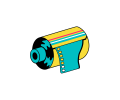Capturing Moments: Film Camera vs Digital
In the world of photography, the battle between film cameras and digital cameras has been ongoing for years. Both mediums offer distinct advantages and unique aesthetics, sparking debates among photography enthusiasts about which is truly superior. While each has its merits, the decision between film and digital ultimately boils down to personal preference, intended use, and the desired end result.

The Charm of Film Cameras
Film photography carries a timeless charm that appeals to purists and artists alike. The process of loading film, manually setting exposure parameters, and carefully composing each shot can be an immensely rewarding experience. Here are a few aspects that make film cameras stand out:
- Aesthetic Appeal: Film images often have a distinct, nostalgic quality characterised by grain, color shifts, and subtle imperfections. This unique aesthetic can evoke emotions and lend a timeless quality to photographs.
- Tactile Experience: Operating a film camera requires a deeper understanding of photography fundamentals. From selecting the appropriate film stock to manually focusing, photographers can cultivate a stronger connection with their craft.
- Slow and Intentional: Shooting film encourages a more deliberate approach to photography. Limited exposures per roll promote thoughtful composition and framing, resulting in a more deliberate creative process.
- Dynamic Range: Film cameras excel in capturing a wide dynamic range, particularly in highlight and shadow details. This feature often contributes to a more balanced exposure in challenging lighting conditions.

The Power of Digital Cameras
In contrast, digital cameras have revolutionised the world of photography with their convenience, flexibility, and rapid evolution of technology. Here’s why digital cameras have gained such widespread popularity:
- Instant Gratification: One of the most significant advantages of digital photography is the ability to review and retake shots immediately. This instant feedback allows photographers to refine their technique on the spot.
- Cost-Efficiency: While the initial investment in a digital camera can be higher, the ongoing cost per shot is significantly lower compared to film. There’s no need to purchase and process film rolls, making digital photography more accessible to a wider audience.
- Versatility: Digital cameras offer a plethora of shooting modes, white balance settings, and post-processing options. This versatility empowers photographers to adapt quickly to different shooting conditions and experiment with various creative styles.
- Low-Light Performance: Many digital cameras are equipped with advanced sensors and image stabilisation technology, allowing for impressive performance in low-light environments without excessive noise.

The Art of Choice: Film vs Digital
Ultimately, the decision between film and digital photography hinges on personal preferences and the intended purpose of the photographs. Some photographers may lean towards film for its nostalgic appeal and tactile experience, while others prioritise the convenience and versatility of digital technology. Many professionals find themselves incorporating both mediums into their work, capitalising on the strengths of each.
The film camera vs digital camera debate is not about determining a clear winner, but rather understanding the unique strengths that each medium brings to the world of photography. Film cameras evoke a sense of artistry, tradition, and authenticity, while digital cameras offer convenience, adaptability, and instant feedback. Whichever path photographers choose, the ultimate goal remains the same: to capture and share the beauty of the world through their lens, whether analog or digital.
